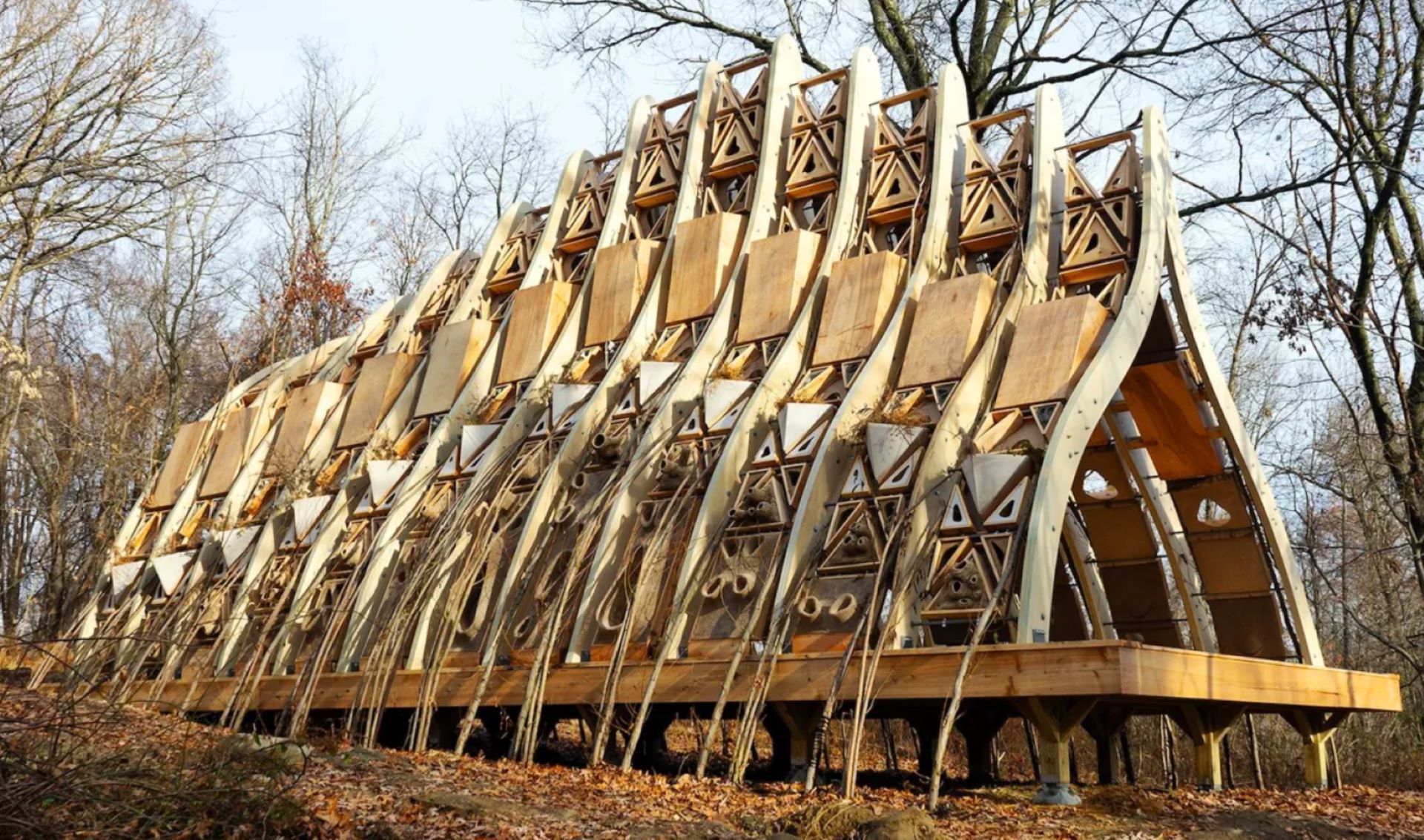An ancient practice is getting an assist from modern technology thanks to nonprofit architecture and urban design research group Terreform One.
While the results might seem “strange,” as outlined by Fast Company, they are equally beautiful and intriguing as developers eye cleaner ways of building living spaces and other structures.
For architect Mitchell Joachim, this meant designing Fab Tree Hab, which is made from growing trees — an idea he says goes back to illuminated manuscripts from biblical times.
“We wanted to use the powers of computing and fabrication systems and other ideas about how we could prototype this to nudge nature or help train nature to do the things it does naturally, but shape it into usable structures and eventually homes,” Joachim told the outlet of the design process.
On its website, Terreform describes the 1,000-square-foot pavilion as “a terrestrial reef and grafted living tree structure” that was developed with the aim of “pushing the boundaries of regenerative design” to support biodiversity.
“It attracts all kinds of things to live inside it and around it and underneath it and then thrive in that section of the forest. On day one, we had frogs move into the shelter,” Joachim added in his interview with the online platform.
Using trees in the design also helps cut down on carbon pollution that is overheating our planet, leading to disruptions in the healthy natural balance of our world. According to the U.N. Environment Programme, a whopping 37% of planet-warming gases are generated by the buildings and construction sector.
The production of cement is one factor in this, but the Fab Tree Hab required almost no concrete for its foundation, according to the architecture group. Natural materials like cedar and jute — treated beeswax and rosin — were used for the facade.
While this idea had been in the works as far back as 2002, per Fast Company, the replanted trees that make up the arches of the structure were brought in from a biomass farm and were able to support the wall system after a year’s growth.
Fab Tree Hab, which is located to the north of New York City, is still in an experimental phase, but Joachim hopes that continually growing structures, like museums, houses, and opera houses, could eventually be part of the new norm.
On its website, Terreform also states that “community engagement and education are core components of the project mission” and that it intends to inspire younger generations to embrace and engage with nature.
Join our free newsletter for weekly updates on the coolest innovations improving our lives and saving our planet.

Wanda Parisien is a computing expert who navigates the vast landscape of hardware and software. With a focus on computer technology, software development, and industry trends, Wanda delivers informative content, tutorials, and analyses to keep readers updated on the latest in the world of computing.


